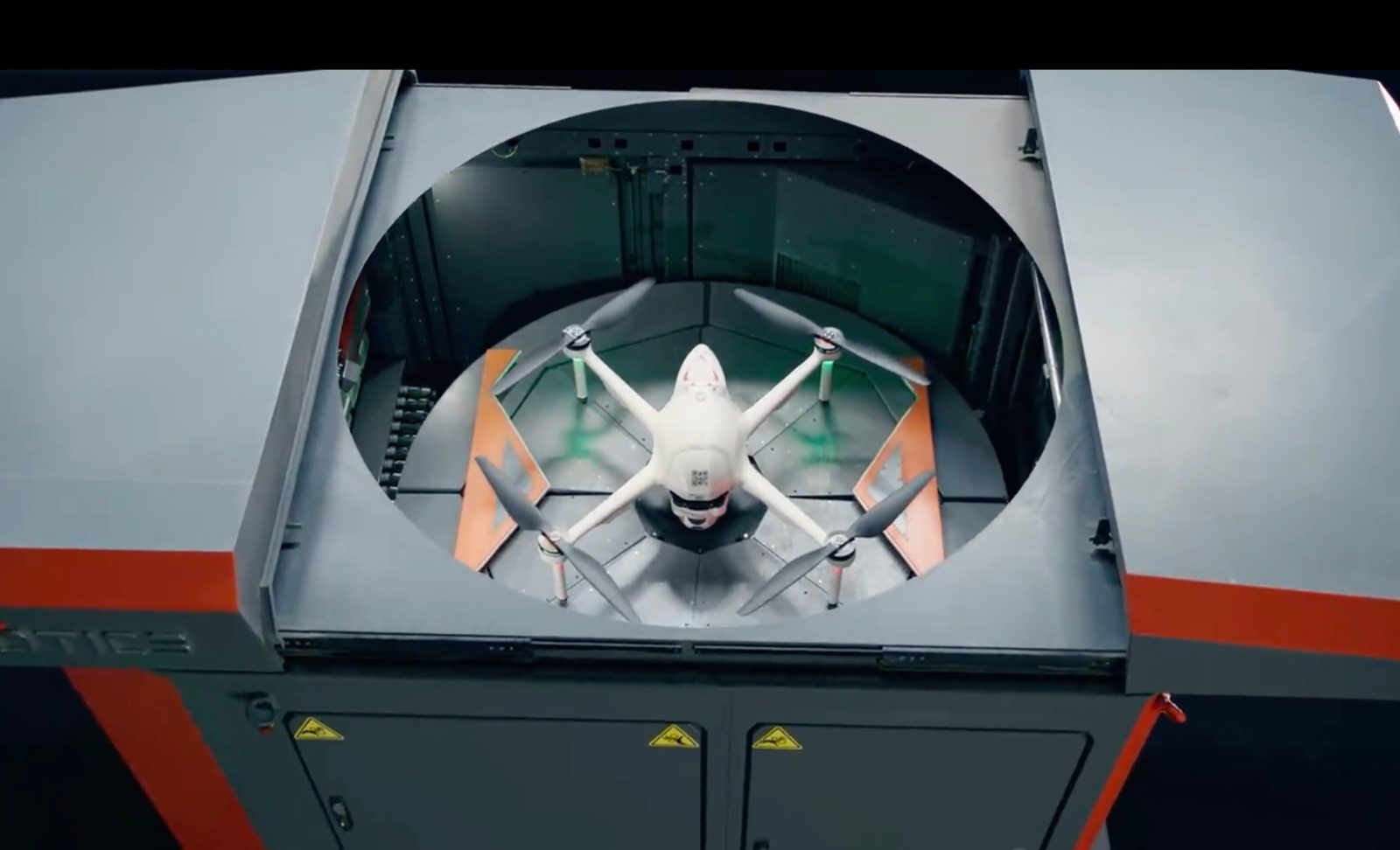
The Federal Aviation Administration (FAA) announced a trio of significant decisions late Wednesday, including issuance of type certification to Ondas Holding unit Airobotics’ Optimus-1EX automated drone platform, in what’s being touted as the “first non-air carrier drone designed for autonomous security and data capture.”
Ondas said the “first-of-its-kind certification” of the Optimus was the fruit of four years of work with the FAA – a process doubtless facilitated by long, successful experience of sister drone company American Robotics in interfacing with the regulator on expanded operational authorizations.
Israel-based Airobotics – which Ondas acquired last year after buying American Robotics in 2021 – said it now plans to seek approval to deploy the fully automated Optimus-1EX system across the US, as it has done in urban sections of the United Arab Emirates and its domestic Israeli market.
Read: American Robotics owner Ondas finalizes Airobotics acquisition
The Airbotics platform, which is capable of 24/7 operation, is described as an asset for Smart City, enhanced public safety, first responder commercial and industrial aerial monitoring and data activities. With the Optimus-1EX now type certified in the US, Ondas hopes to deliver it to clients as a virtual plug-and-play aerial inspection, situational awareness, and data gathering tool.
“We are thrilled to announce that our Optimus System has met all of the specific airworthiness and noise standards set by the FAA,” said Ondas CEO Eric Brock. “Now available in the United States through American Robotics, we extend a warm welcome to visionary municipalities and public safety departments, as well as commercial and industrial entities eager to harness this certified technology for taking drone aerial security and data to the next level of automation for digital transformation within a wide variety of environments.”
In addition to its Airobotics type certification decision , the FAA also announced it had granted open-ended exemptions to UPS Flight Forward and Avionix to operate beyond visual line of sight flights(BVLOS) over people and traffic. The decision frees the companies of the standard requirement of visual observers maintaining eye contact with UAVs flown – the primary brake on aerial service providers being able to significantly scale.
Avionix will be permitted to use the FAA exemption within North Dakota’s Vantis Network for advanced UAV flight and navigation, while UPS Flight Forward is expected to oversee BVLOS delivery services using Matternet M2 drones in Ohio, North Carolina, Florida, and additional states from its remote command post in Kentucky.
Read: NCDOT wins second FAA BVLOS remote drone inspection waiver
Lisa Ellman, executive director of the Commercial Drone Alliance trade organization, hailed both FAA decisions as progress toward allowing UAV companies to work and scale with greater flexibility.
“Broadly enabling UAS flights BVLOS in a safe and secure manner is critical to unlocking the aggregate safety, security, equity, and sustainability benefits of using UAS for many commercial and public safety tasks… (and) the FAA’s issuance of exemptions needed to conduct and scale BVLOS operations in the near term is a critical step to scaling commercial drone operations,” Ellman said. “Achieving UAS type certification is a key milestone toward normalizing more complex and scalable commercial drone operations… The TC helps streamline these approval processes for industry and the FAA.”
Sector legal expert and general drone wonk Brendan Schulman counsels some caution in interpreting the FAA’s type certification of the Airobotics tech, however. Though the regulator’s decision is still clearly a major milestone by any measure, he notes the wording of Ondas’s announcement leads him to wonder whether both the drone and ground control system have received the same clearance as good-to-go.
“It will be important to know whether all aspects were certified by the FAA, meaning both the aircraft and the GCS,” Schulman noted online in response to Ondas’s video announcement (see above). “This has tripped up others, given FAA’s change in approach about two years ago. I noticed the video says ‘will be permitted’ (0:51) as if something isn’t quite done.”
DroneDJ will keep readers posted on that question either way it may play.
FTC: We use income earning auto affiliate links. More.




Comments